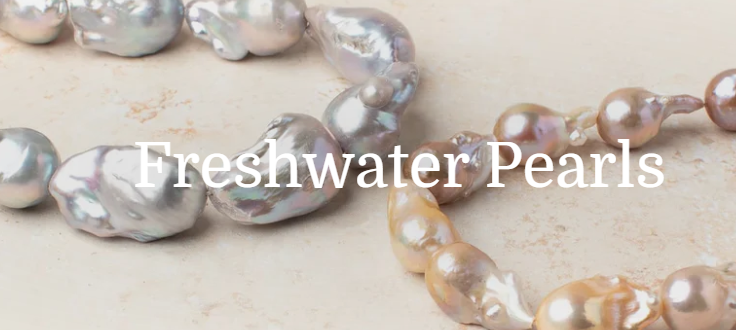Pearls have captivated the human imagination for centuries, embodying elegance, refinement, and grace. Among the various types of pearls, freshwater pearls hold a unique place in the realm of fashion due to their remarkable diversity and accessibility. Unlike their saltwater counterparts, freshwater pearls are cultivated in mussels within lakes and rivers, making them more widely available and variably shaped. This adaptability has allowed Freshwater Pearls to evolve through fashion history, reflecting changing tastes and technological advancements. This blog will trace the journey of freshwater pearls from ancient adornments to modern-day fashion staples.

Ancient Origins and Royal Favor
The history of freshwater pearls as adornments dates back to ancient civilizations. The Chinese were among the first to wear freshwater pearls as jewelry, and they even practiced early forms of pearl farming as far back as 2206 BC. Pearls were highly valued for their lustrous beauty and were often given as gifts to Chinese royalty.
In the Roman Empire, pearls were considered the ultimate status symbol. Pliny the Elder, a Roman author, naturalist, and natural philosopher, documented the Roman elite’s obsession with pearls. He noted that the gemstones were a display of wealth at banquets and in the adornments of the wealthiest and most powerful women of the time.
The Middle Ages to the Renaissance
During the Middle Ages, pearls continued to symbolize purity and were typically worn by royalty and the upper classes in Europe. Portraits of queens and noblewomen adorned with ropes of pearls and pearl-embellished garments underscore their enduring appeal during this era. The Renaissance period heightened the pearl’s allure, with the advent of the Age of Exploration leading to an increased supply and demand for these precious beads.
Industrialization and Democratization
The true democratization of pearls began in the 19th century with the onset of the Industrial Revolution, which saw an increase in wealth and the emergence of a burgeoning middle class. As fashion and luxury goods became more accessible, so too did pearls. However, it was the development of pearl culturing techniques in the early 20th century that turned freshwater pearls into a staple of women’s fashion.
Japanese innovators, most notably Kokichi Mikimoto, mastered the technique of inducing pearl formation in mollusks through nucleation. This practice quickly spread to freshwater mussel farming, particularly in China, which emerged as a major player in the freshwater pearl market. These advancements made pearls no longer exclusive to the elite, allowing more people to own and wear these precious gems.
Mid-20th Century Elegance
By the mid-20th century, freshwater pearls became a hallmark of refined elegance. They were popularized by fashion icons like Audrey Hepburn and Jackie Kennedy, who wore them with everything from formal attire to casual chic. Their versatility shone through as they could be dressed down for daytime events and up for evening engagements, making them a staple in every woman’s wardrobe.
Freshwater Pearls in Contemporary Fashion
Today, freshwater pearls are celebrated not only for their classic appeal but also for their versatility in modern design. They are no longer confined to traditional settings; contemporary designers are reimagining pearls in more modern, often avant-garde styles. These include pearls embedded into geometric jewelry pieces, used as embellishments on clothing and accessories, or even integrated into hair ornaments.
Freshwater pearls come in a variety of shapes and colors, from perfectly round to baroque, and in hues that range from traditional white to pinks, lavenders, and even black. This variability makes them particularly popular among designers who use them to craft unique, eye-catching pieces that appeal to a wide audience.
Ethical and Sustainable Fashion
In addition to their aesthetic and stylistic flexibility, freshwater pearls are gaining prominence in the realm of ethical and sustainable fashion. Unlike the mining of other gemstones, pearl farming has a minimal environmental impact and can even contribute to water conservation through the mussel’s natural filtration process. This aspect makes freshwater pearls a favorite among consumers who prioritize environmental consciousness in their fashion choices.
Conclusion
You can buy freshwater baroque pearls and a lot of other kinds of beads on Beads of Cambay in wholesale quantities. The pricing and the quality are too good to miss! So if you are searching for a baroque pearl wholesale store, Beads of Cambay is it.
From ancient royal ornaments to contemporary fashion accessories, freshwater pearls have traversed a long and fascinating journey. Their evolution is intertwined with technological, economic, and social changes, reflecting the shifting landscapes of fashion and luxury through the ages. Today, they remain as relevant as ever, continuously adapting to new trends and emerging as a symbol of both tradition and innovation in the fashion world. Freshwater pearls not only continue to adorn wearers but also embody a heritage of elegance that moves effortlessly with the times, confirming that their allure may never fade.




